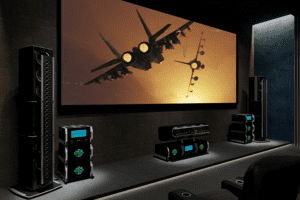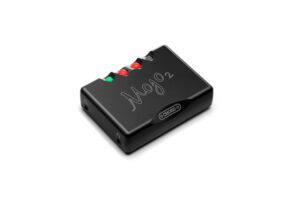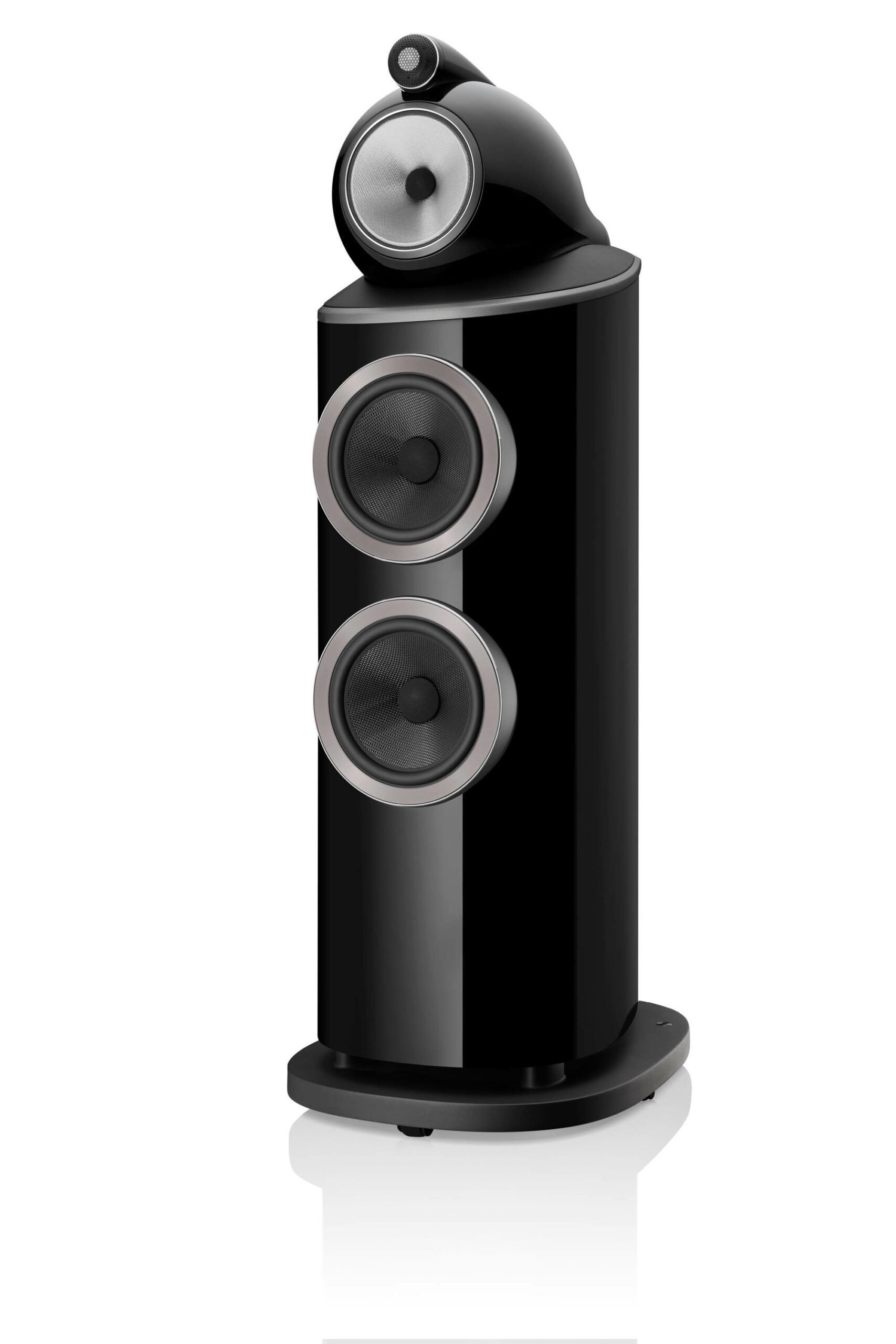
Abbey Road is about as iconic as British recording studios get. So it’s to Bowers & Wilkins credit that the company’s loudspeakers have been used there since 1980, when they were initially used for film scoring but also hit albums including Hounds of Love; maybe that’s why it’s my favourite in Kate Bush’s back catalogue. You can see the older models lining the corridors at Abbey Road; they clearly never throw anything away, but for the official launch of the new 4th generation 800 Diamond series a pair of the new 801 D4s had been hauled into the studio two control room so that visitors could listen to them. Presumably Bowers & Wilkins had no control over what was played otherwise they might have chosen something other than the Mary Poppins Returns soundtrack, but it made it clear that the company’s latest range topper is a very capable loudspeaker (even Emily Blunt didn’t sound that bad).
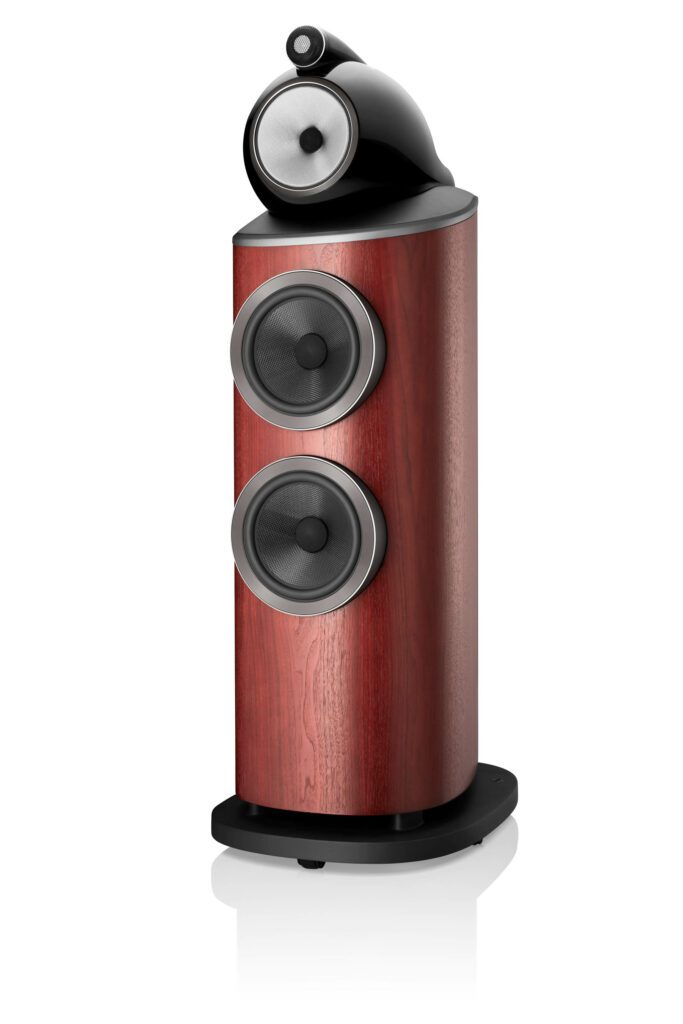
Bowers & Wilkins has been rolling out a new 800 Series every five years or so for the last couple of decades but it has not always been thus. The first example of the breed was the 801 in 1979 and that remained at the top of the tree until 1987 when the Matrix internal bracing structure was introduced. In 1998 the company decided to incorporate some of the ideas developed for the radical Nautilus speaker into the new 800 Series. This was when the distinctive midrange ‘head’ first appeared; its curves machined out of synthetic stone but finished in gloss black, which given the popularity of Corian in high-end kitchens seems an odd move, but then again kitchens are probably not what most high-end audio enthusiasts dream of. This series also employed bent ply cabinets – substantial ones at that – requiring significant tooling investment and providing an extremely stiff structure for the bass drivers to work in. The next move was the introduction of the diamond tweeter dome in 2005, a part which stayed with the following D2 series in 2010 and carried through to the D3 five years later, when the ply wrap was reversed and the iconic yellow Kevlar midrange was swapped for a Continuum cone.
Taken an extra year
The latest 800 Series has taken an extra year because of some pandemic thing. It retains the diamond tweeter dome but there have been big changes made to the rest of the high frequency system. The most obvious being that the housing is twice the weight and nearly three inches longer; this makes it stiffer and allows the tweeter to go down further in frequency without distortion. The magnet count has been reduced to two from three, which reduces compression behind the dome. Likewise, there are twice as many holes in the voice coil former for lightness and ease of movement. Equally important is the way that the tweeter housing is connected to the midrange or Turbine Head beneath it, there are now two rather than one silicone mounting that provide better decoupling than the previous system.
The midrange enclosure also sits on silicone decoupling with four points of contact. This enclosure transitioned from synthetic stone to aluminium in the D3 series but the tuned mass dampers within it have been ‘re-optimised,’ or ‘improved’ as it’s known, this time around. The biggest change to the midrange driver is in the spider that centres the coil former in the throat of the magnet. For what seems like millennia this job has been done by doped and corrugated fabric which is light and flexible enough to allow the cone to move but stiff enough to keep it centred. Bowers & Wilkins’ research elves have been working on a replacement for over a decade, which suggests that the new six leg, thermoplastic spider was not as easy to create as it looks. This looks deceptively simple, but it is very open compared to the normal variety and makes considerably less noise, 80dB less at 1kHz apparently, which sounds like a lot but presumably they weren’t that noisy in the first place. However, in the process of refining the midrange system, the speaker has become more revealing and transparent to such changes. This ‘Biomimetic Suspension’ will likely be rolled out across Bowers & Wilkins’ 600 and 700 series three-ways as it’s not intrinsically expensive, it just took a long time to get right.
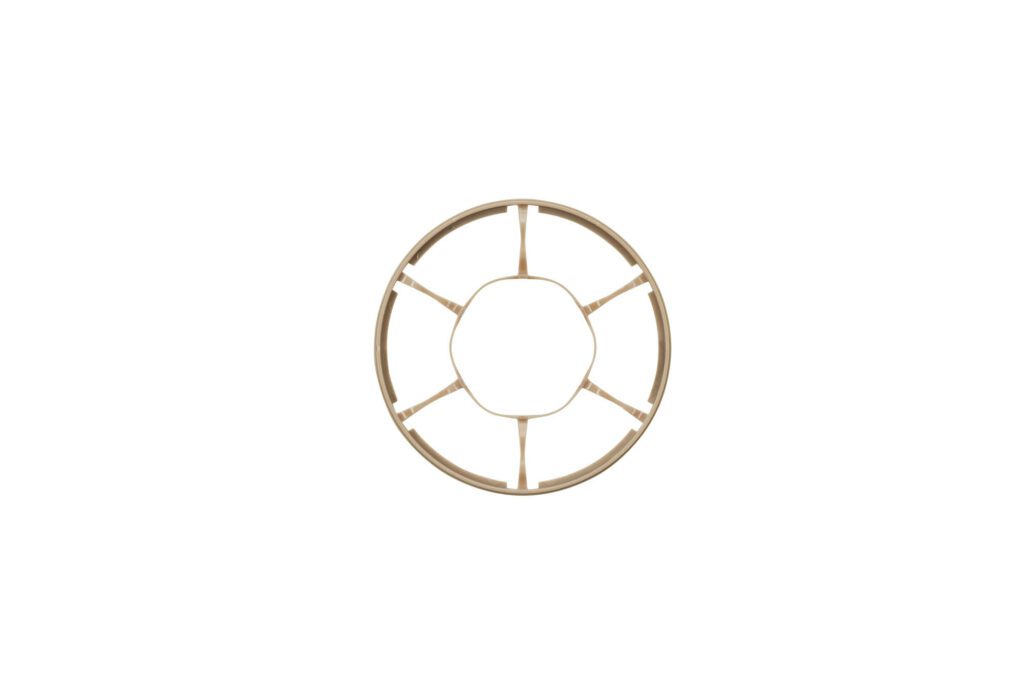
The bass cabinet continues to be made out of bent ply but now all the forming is done in the company’s Worthing facility in the UK where the entire 800 Series Diamond range is built. Formerly reserved for the largest models, it has rolled out this construction method across the 800 Series range and has had to add to the array of huge presses in the factory to accommodate this. What you can see has changed here is that the collar beneath the head is no longer wooden but made of a large aluminium casting that is finished in leather; this is said to be more accurate and stiff than the previous approach, it also provides a capping for the neat fluted metal back plate. Inside the box the matrix has been braced with aluminium that is glued and screwed in place. The bass drivers bolted to this solid structure are eight-inch Aerofoil cone types with a new foam anti-resonance plug, internally the metal elements of the motor structure have been upgraded to a steel with very low electrical conductivity and lower inductance, which has apparently reduced distortion over the previous system.
Tilt test
The support plinth is a larger aluminium casting than it was and has threaded holes at the back for tilt test compliance; the latest 802 being more top heavy than its forebear (as I found the first time I went to move them). There are four wheels beneath it; two of which rotate to make manoeuvring these substantial (88kg/194lb) beasts around a little easier, when the spikes are up that is. The spikes are also substantial and have locking collars that are rather like wingnuts so can be tightened without a tool; fortunately Bowers & Wilkins supply magnetic pucks for those of us who want to keep our flooring puncture free. Cable connections are made through plated copper terminals with spade-ended jumper cables provided to allow single wiring.
Steve Pearce, Chief Acoustic Engineer at Bowers & Wilkins’ SRE research centre, said that the acoustic team had worked on improving musicality and coherence when tuning the fourth generation Diamond series. If the last 802 D3 had a weakness that was it; they couldn’t be faulted in terms of detail resolution, imaging and perceived distortion but didn’t always deliver the most engaging result. Or to put it another way, you needed a very special amplifier to make them charming. The 802 has higher than average sensitivity of 90dB but controlling the bass requires power and combining power with speed in an amplifier is a difficult job. However the 802 D4 does indeed sound more musically compelling than its forerunner without any real change to the load so the many other changes to the system have clearly borne fruit.
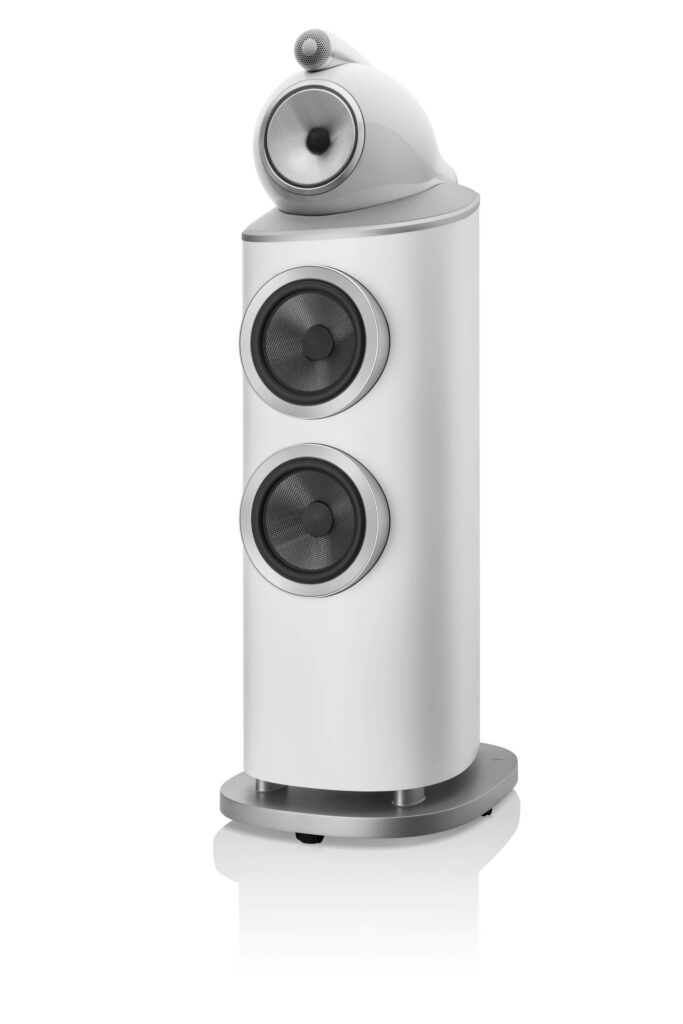
I started using the 802 D4s with Bryston 7B3 monoblock power amplifiers, genuinely mighty beasts with a specified 700 Watts with which to get any speaker to jump when they say so. These are not the most charming amps but they do allow this speaker to produce beautiful low end and superb imaging of the genuinely holographic variety. The sound produced is both rich in the small details that define the nature of the instruments, voices, recording method and production as well as the power that gives dynamics real impact. They do the micro and the macro with consummate ease and made Hania Rani’s Home [Gondwana] sound gorgeous even though it’s not the most polished of productions.
Switching to my regular power amplifier, the Moor Amps Angel 6 I was immediately impressed with the depth of image produced by the reverb on Dan Berkson’s Dialogues album [Freestyle], the sound wasn’t as incisive as with the Brystons but it timed almost as well. The 802 D4s reveal a mountain of detail with a good source like the Rega P10, there is so much going on in the track ‘Unity’ especially in the drums and percussion and it’s all clear and easy to follow, right down to the quietest parts. This is what you get when the speaker adds so little to the sound, the smallest sounds come through and reinforce their more substantial fundamentals to create a richer and more complete overall picture. I really enjoyed Patricia Barber’s Live: A Fortnight in France [Blue Note], an album that rarely seems to live up to expectations, something that’s easy to put down to weaknesses in the recording. But it seems that when the system and in particular the weakest part of the system, the speaker, is delivering more signal and less colouration it comes together.
On Haydn’s Quartets each instrument inhabits its own clear three dimensional space, the bump of the bows on strings placed clearly in front of the 802s gives you a real sense of realism, and (goose) bumps of your own, as well as lovely depth of tone. This loudspeaker has always been at its best when playing at higher levels, this brings up the midrange and adds to the precision of the imaging as well as the definition of the bass. The power and solidity they bring to Tom Waits’ ‘Shore Leave’ [Swordfishtrombones, Island] is excellent but such niceties fly out of the window when ‘16 Shells from a Thirty-ought-six’ comes on and there is no alternative but to cavort around the room with glee. If there’s energy on the record it comes out of these speakers with gusto, and yes that is a very good thing. Another energetic number that doesn’t always work is ‘Subway Station #5’ by Patricia Barber again, here the harmonics and atmosphere are superb with fabulous attack on the drums, the listener being drawn into the way that Barber builds up intensity with a repeated motif on the piano’s left hand keys while the rest of the band lay down the jam around this phenomenal rhythmic anchor. This piece proved to be totally mesmerising to an extent that it rarely does. These Bowers & Wilkins are powerful both emotionally and physically, they can move as much air as you like but remain calm under fire, seemingly never smearing the sound but letting it flow unfettered into the air.
Cerebral
With more cerebral material it’s the quality of imaging that becomes apparent, I love the way that they throw shapes in the air with sound. Laurie Anderson’s ‘Gravity’s Angel’ [Mister Heartbreak, Warner Bros] is good for this but the 802 D4s are better than most at getting the acoustic and synthetic sounds that she corrals to carve a space in the room. But that alone does not make a piece of music interesting for long, it has to make an emotional connection and this is where the 4th gen 802 Diamond has the edge over its predecessors. The same can be said for the bass which has always been a strongpoint of this loudspeaker but is now clearly better, it is supremely nuanced allowing the characteristics of each instrument or voice to be that little bit more expressive and interesting. Essentially there is less box and more original sound which means that the rumbles on the intro to Blade Runner do not blur with low synth notes, the fretless on Beck’s ‘Paper Tiger’ is clearly the same as that on Serge Gainsbourg’s ‘Melody Nelson’ and the fretless bass on Carla Bley’s ‘Life Goes On’ is obviously Steve Swallow.
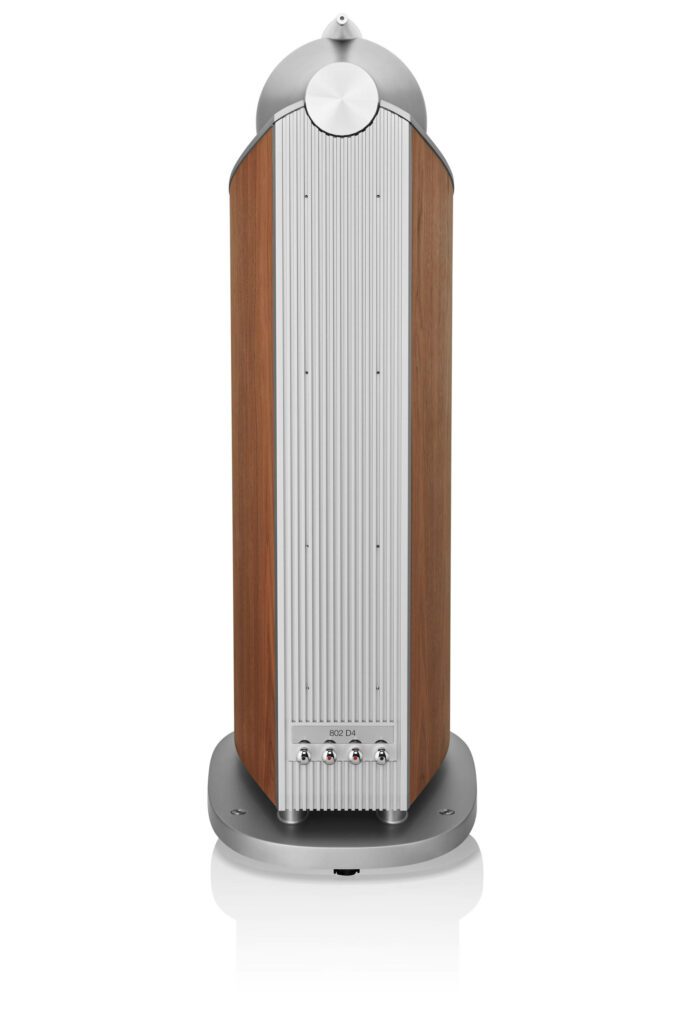
The Bowers & Wilkins 802 D4 is more expensive than its forebear but so is everything else around us, including the competition, which in all honesty struggles to compete. Bowers & Wilkins makes more high-end loudspeakers than anyone else in the world, 6,500 pairs of 800 series models a year in fact, and this gives them an economy of scale that means the 802 D4 costs half as much as its nearest serious competitor. It may not have the snob appeal of boutique brands but it has a phenomenal R&D dept that produces world-class loudspeakers, and the 802 D4 is certainly that.
TECHNICAL SPECIFICATIONS
- Type: 3-way, four-driver, floorstanding speaker with reflex loaded enclosure.
- Driver complement: One 25mm diamond dome tweeter; one 150mm Continuum cone midrange driver with FST surround; two 200mm Aerofoil cone bass drivers.
- Frequency response: 17Hz – 28kHz (+/-3dB from reference axis)
- Impedance: 8 Ohms (minimum 3.0Ω)
- Sensitivity: 90dB/ 2.83Vrms at 1m
- Dimensions (HxWxD): 1218 x 413 x 602mm
- Weight: 88.1kg/each
- Finishes: Cabinet: Gloss Black, White, Satin Rosenut, Satin Walnut Grille: Black, Grey
- Price: £24,000/pair
- Manufacturer:
Bowers & Wilkins
URL: bowerswilkins.com
Tel: 0800 232 1513 (UK only)
By Jason Kennedy
More articles from this authorRead Next From Review
See all
PrimaLuna EVO 100 phono preamplifier
- Apr 22, 2024

Reiki Audio SuperSwitch Master Pro + Servant Pro
- Mar 27, 2024

Melco Audio N1-S38 music server
- Mar 27, 2024








